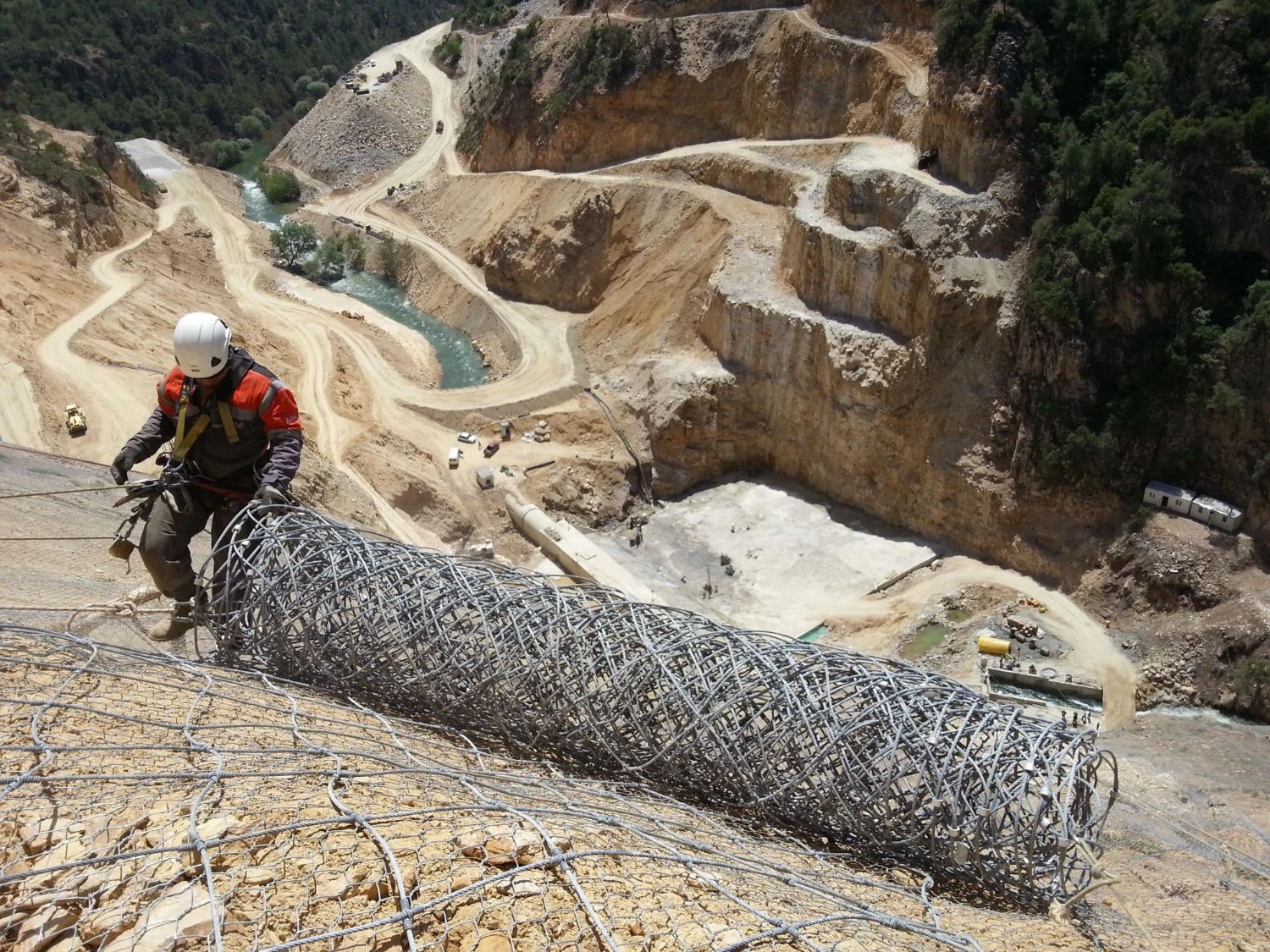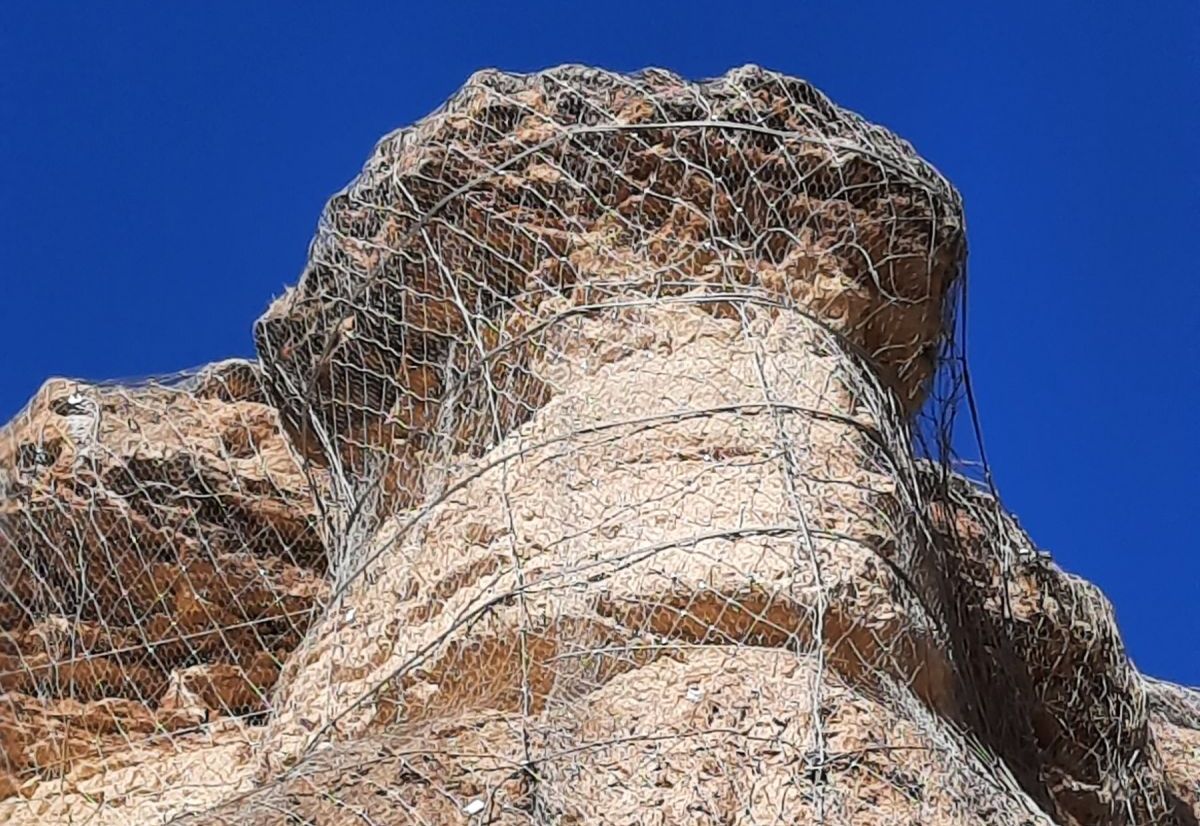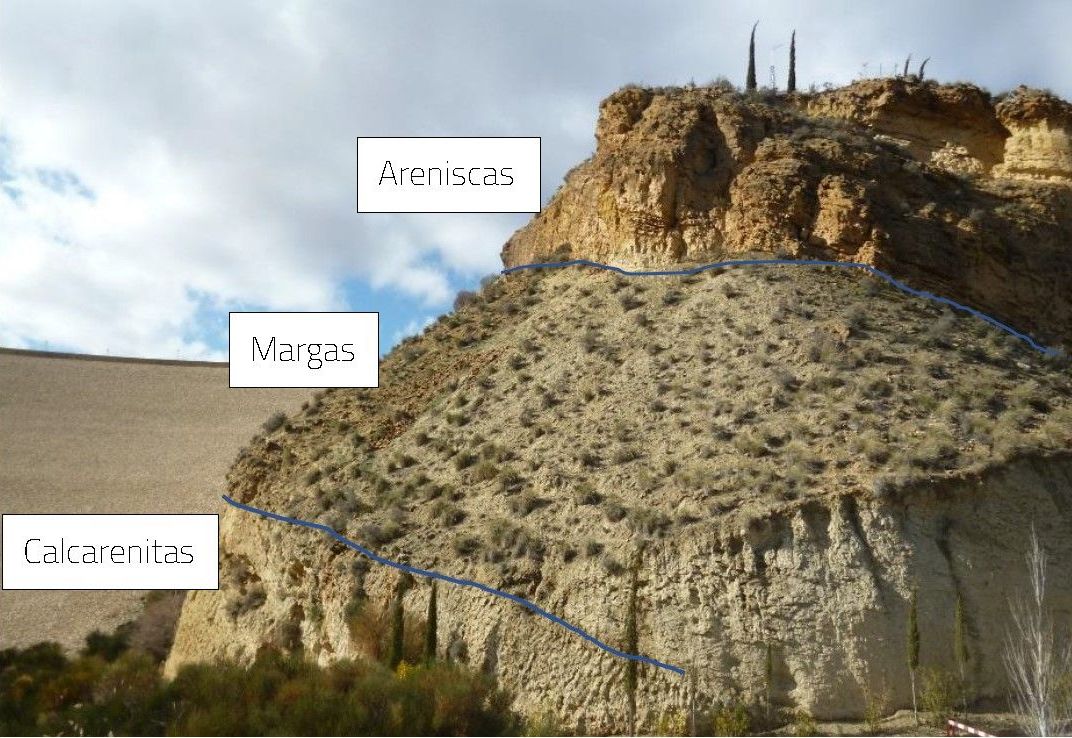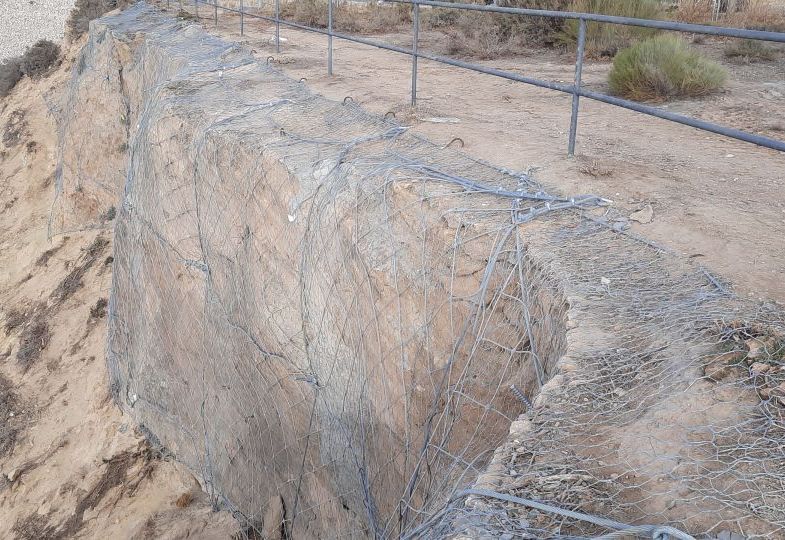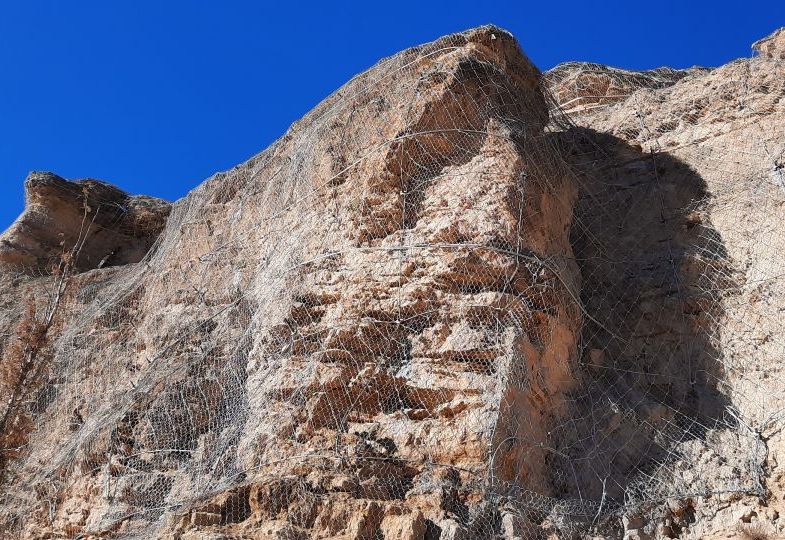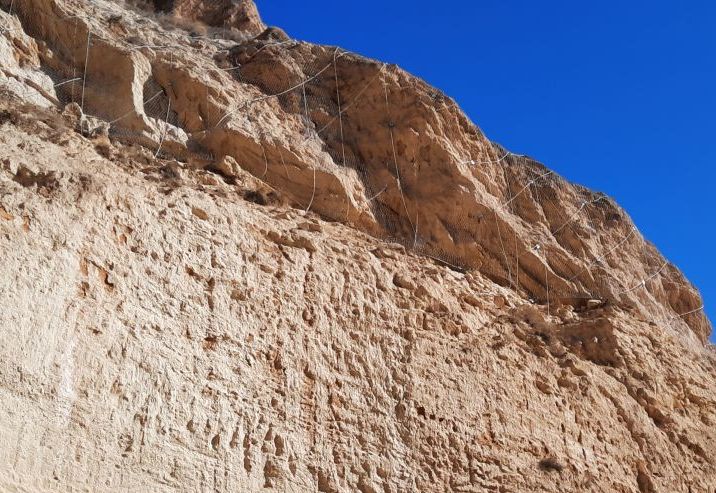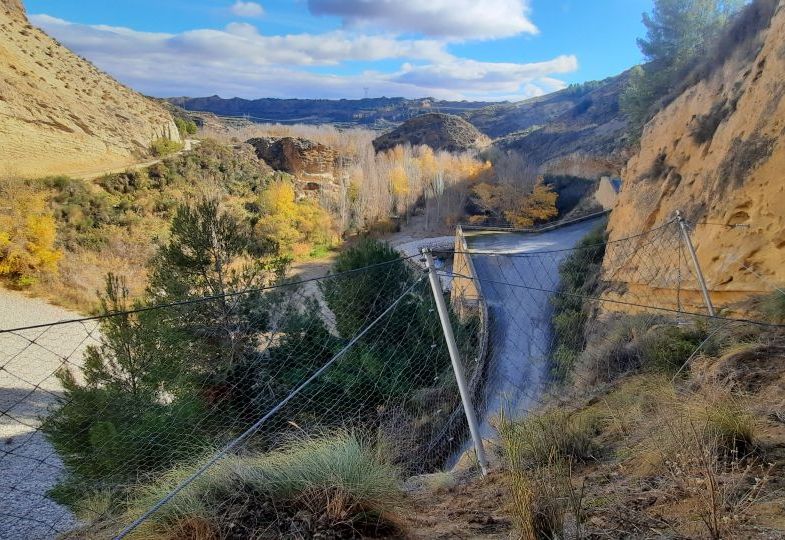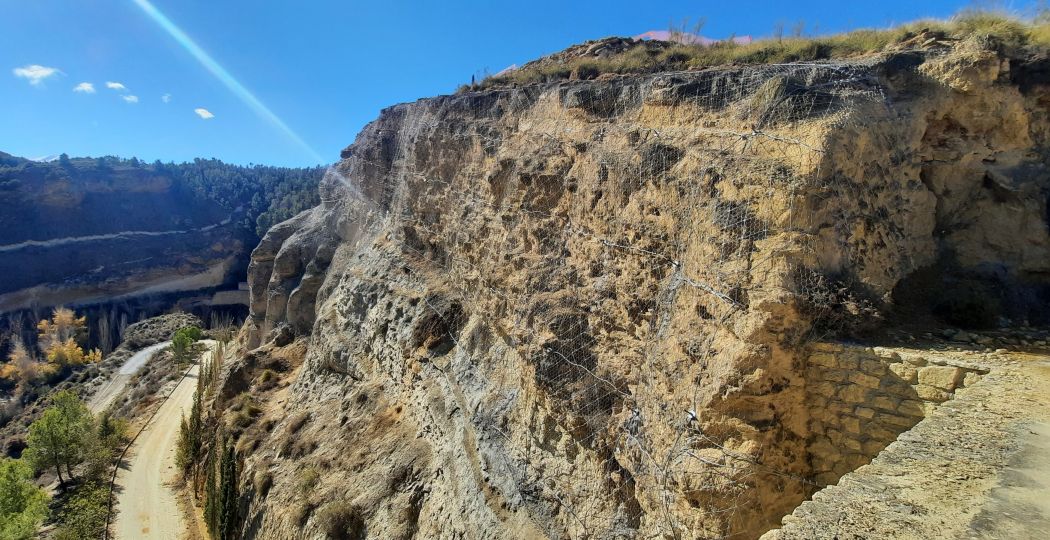Rockfall Protection & Snow Barriers
2021
GRANADA - ANDALUCÍA - España
Confederación hidrográfica del Guadalquivir
Gesprotal, S.L.U.
Ayesa
PRESA FRANCISCO ABELLÁN
Problem
The Francisco Abellán reservoir is located near the town of Lopera, in the center of the province of Granada. It is fed mainly by the tributary of the river Fardes, which in turn is fed by the river Guadiana Menor and covers an area of 1847.40 km2. The reservoir contains Miocene sedimentary materials such as sandstones, marlstones and calcarenites.
In the extreme north-east, there is an alternation of these three materials and two problems:
- The first is in the upper sandstone bench due to the presence of unstable blocks, some of them of large size.
- The second problem is in the lower bank, where unstable blocks and roofs are also observed as a result of differential erosion.
On the other hand, on the northwest slope (NW) there is access to the monitoring station which is unprotected against falling rocks.
Solution
To protect users and maintenance personnel from possible landslides, a specific solution has been chosen for each situation.
To ensure the stability of the upper sandstone bank (NE slope), 5,000 m2 of support has been provided, consisting of:
- LEA 300-8 mm cable net with 130 kN/ml tensile strength and 204 kN punching strength, to retain the material between the anchors.
- Triple Twist Mesh 8×10-16 of 55 kN/ml Tensile Strength and 67 kN Punching Strength, to retain smaller fragments.
- Gewi bolts Ø25 mm, in 3Hx3V grid, Length 3m.
In addition, for the larger blocks, reinforcement has been provided by means of steel cable strips and flexible helical cable anchors. To ensure the stability of the lower calcarenite bank (NE slope), an 8×10-16 Triple Torsion mesh reinforced with Ø 12 mm steel cables has been installed.
Finally, to protect the access to the auscultation centre (NW slope), a 20 m long and 3 m high RB 750 dynamic barrier has been installed, capable of absorbing impacts of up to 750 kJ of energy.
Used Products
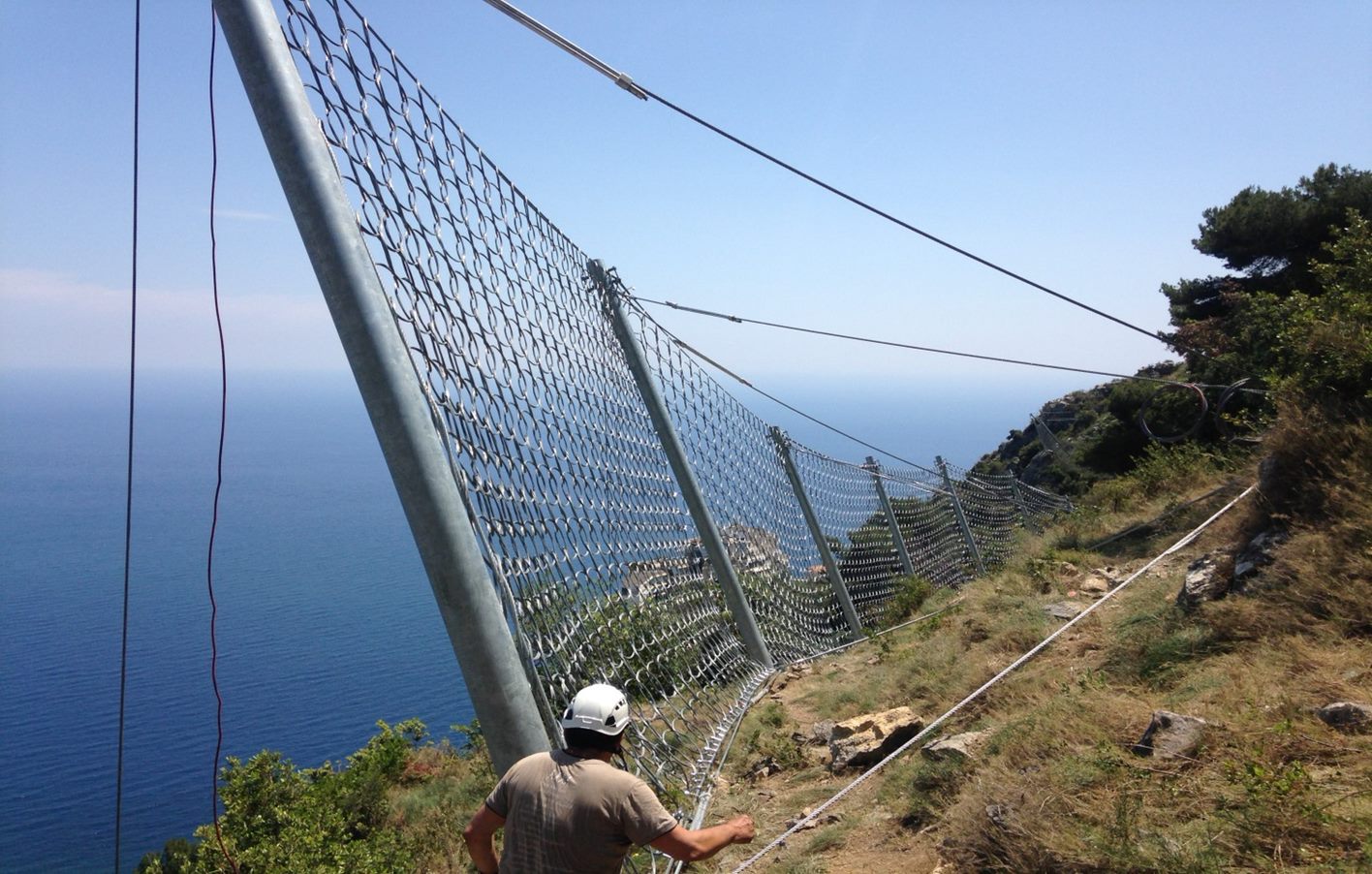
Rockfall Barriers
Barrierat e rënies së shkëmbinjve Maccaferri (Rockfall Barriers) janë të dizajnuara për të ndaluar/kapur shkembinjte dhe gurët që shkeputen përpara seShiko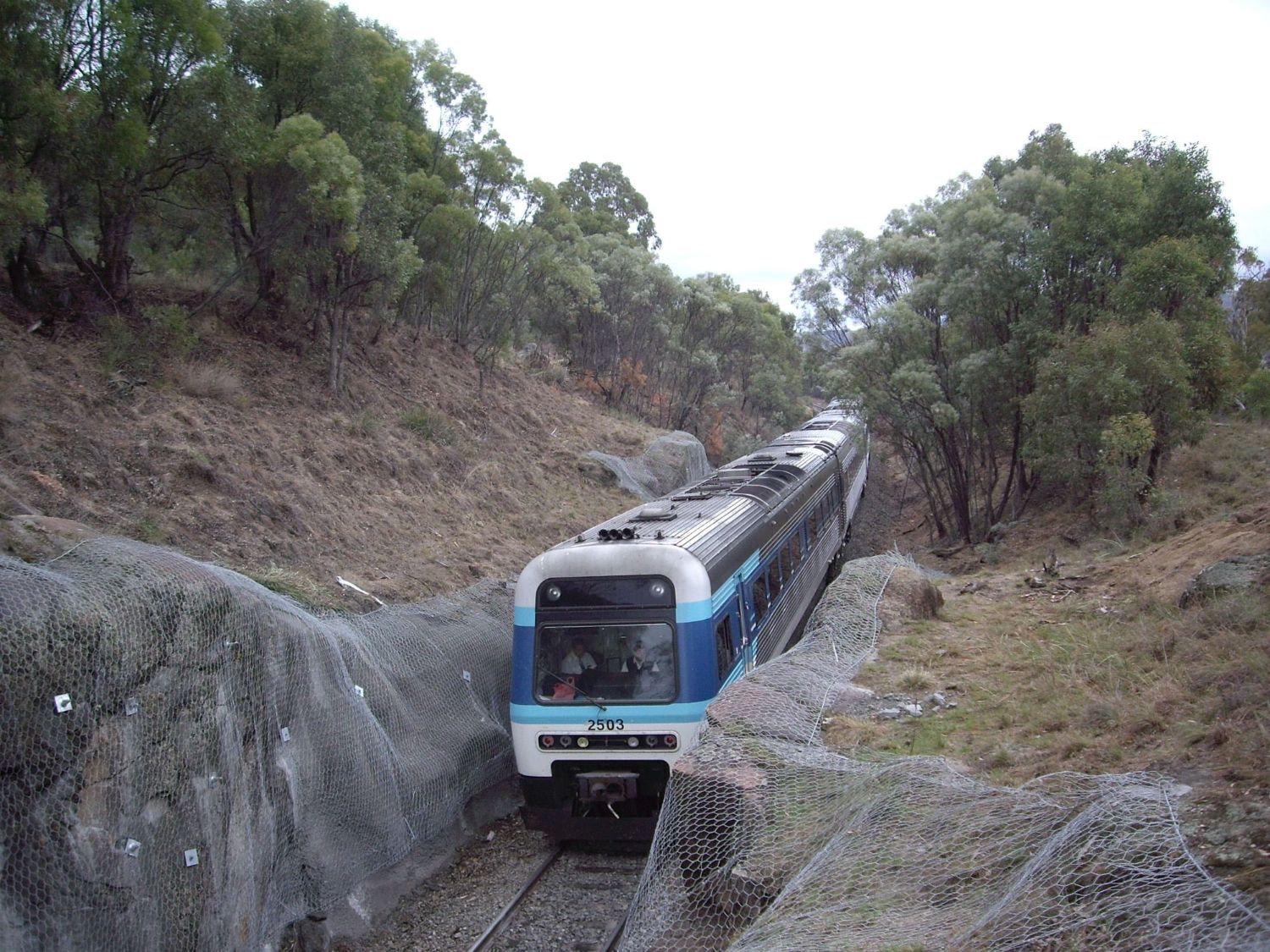
Rrjetat
Maccaferri DT Mesh është një komponent thelbësor i fushes sonë të aplikimit për zbutjen e rënies së shkëmbinjve dhe mbrojtjen nga rreziqet natyrore MShiko